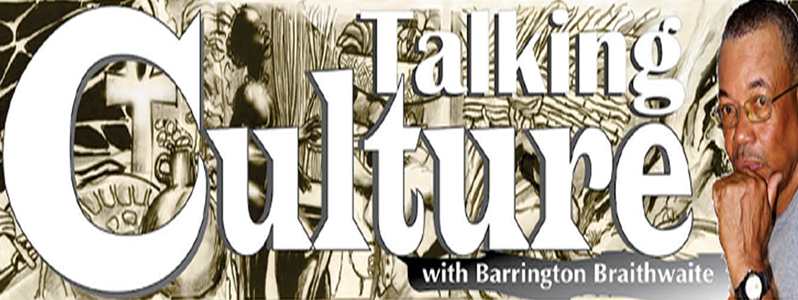IT is part of our humanity to compare to justify one’s self whether nation by nation or human variation against variation [ethnicity] it’s called the ‘Coherence Theory,’ and this study does not always reveal pleasant evidence through its findings; one of the areas that are related to the articles I recently did are the values and realities of Town and Country, in relation to thriftiness, and I should say how mythologies evolve and become etched into customary perceptions, and adopted as truth.
Our history is essential In such a narrative, Berbice, Essequibo and Demerara were separate colonies and each had its own centre of administration, which was the foundation of the subsequent townships, the oldest seat of the colonial administration was Kyk-Over-Al and its plantations, 1644 in Essequibo-Winston Mc Gowan: with Demerara, Stabroek as the capital on the 14th September 1784 (Georgetown would come in 1812)-James Rodway: and New Amsterdam in 1796-Alvin Thompson: but it is the differences of economics and culture that would follow as towns grew. In 1834 emancipation followed and the first villages were bought and streamlined, and livelihoods explored and challenged by the colonial interests, that resulted in the importation of new peoples brought to exact the cheapest labour needed to support the economics of the then colony of British Guiana and to fit into the schemes of the plantocracy against the foremost foe, the freed Africans.

Hostilities emerge in many cases from conflicts based ‘mainly’ on ‘economics’, ‘cultural isolation from and of the other’ and challenges to rights due to bigoted nepotistic class echelons. There’s a piece of information that will formulate how unique hostilities emerge; “Berbice and the Courantyne were less malarial than the Demerara coast and Georgetown. With this advantage of health and the fact that the land is more fertile here than between the Demerara and the Berbice, it seems a paradox that Georgetown and Demerara should have become the focal point of the colony. New Amsterdam, however, was unable to keep pace with Georgetown because its harbour was even more disadvantaged than that of the capital. The bar at the mouth of the river the Demerara will allow small ocean vessels to enter the harbour, but only coastal vessels can enter the Berbice. Anchorage at New Amsterdam is 10 to 13 feet, compared with 24 feet in Georgetown. Thus, New Amsterdam has no direct trade with the outside world; all its imported goods come by rail or coastal vessel from Georgetown. Its tradesmen complain about this dependence on the capital, and in general the townsfolk have no great love for Georgetown”. –British Guiana by Michael Swan 1957.
The other is a rebuttal by Roger Ally (Kaieteur News Feb. 17, 2013) “I condemn the racism contained in these two letters “ written by Vassan Ramracha and Devanand Bhagwand. The writers had both demonstrated the insensitive perceptions of non-exposure to crucial historical and social-environmental processes. To quote Roger on this, he had then explained the differences in economics to urban living compared to rural living, I will elaborate from my own experiences because I was fortunate to have been raised by my god-parents at Mahaica, an experience I cherish for what I learned, my mother and her entire lineage are urban, my great grandfather was born in an area called Robbstown, Grace (my mother) in Bent Street.
My dad at Bartica, his dad from Friendship, East Coast Demerara, his mom from Bartica, most of his relatives in Charlestown, and Ruimveldt with that social and cultural diversity, which I think Roger Alley must have had experience with or exposure to, that allowed his cognisance to assimilate, shaping a much more diverse and grounded perspective on the norms that are applied in forming perceived social and cultural advantages and disadvantages among peoples.
The fact is what lies before all of us today may well have taken hundreds of years to envelop individuals and transform group creeds towards responses of a certain necessary likeness. I can remember talking to relatives my age; just post my God-father’s demise exchanging ideas about owning real estate, they would tell me about a front or back house here, in this or that street, I spoke about buying a land, they would look at me with knitted brows, rightfully so, where in Georgetown did this land to plant fruit trees and to build a four-bedroom house exist, from where I stood with juvenile economics. This was not the usual in rural areas either, people are downtrodden, poor everywhere, but in the country, there are multiple areas of earning real money that are non-taxable, and real estate owner rates are not compete-able between rural and urban.
The Public service –plus workers and private sector staff of our townships do pay most of the national taxes. But if you got the money back then in the rural areas it would be more possible to fulfil that juvenile dream at far less. I can remember a friend who lived in High and Drysdale Streets ‘Big Yard next to relatives of mine, who told me that he ran from the front of the yard to the back in celebration of yard space, in special excitement, when his family moved into their new home in South Ruimveldt in the ’70s. Those “Niggeryards” that Martin Carter referred to, existed for almost 100 years until the post-Independence government freed the occupants from the psychological generational poverty and desperation they represent, this disparity exists in cities across our human world, so do the misconceptions.




.png)









